Winter Hill: Crews battle 'aggressive' merged moorland fire
- Published
The Winter Hill blaze has spread over Lancashire moorland
Fire crews are continuing to battle "a rapidly developing and aggressive fire" on moorland across Lancashire.
A major incident was declared when strong winds caused two large fires to merge close to major communication masts.
Police told walkers and motorists to stay away from the scene at Winter Hill and Scout Road near Bolton.
More than 100 firefighters from around England are tackling the fire, Lancashire Fire service said.

Firefighters try to quell the blaze

The Winter Hill blaze is now in its fourth day
It comes as crews from across the country also joined firefighters and the Army combat a blaze 30 miles away at Saddleworth Moor in Greater Manchester, which started a week ago.
Along with the Winter Hill fire, it has blanketed the region in smoke and ash. People in nearby areas have been asked to keep doors and windows closed.
The Winter Hill blaze, which started on Thursday near a major TV transmitter, is smouldering in pockets across a 3 sq miles (8 sq km) area.
A 22-year-old man, from Bolton, was arrested on Friday on suspicion of arson with intent to endanger life.
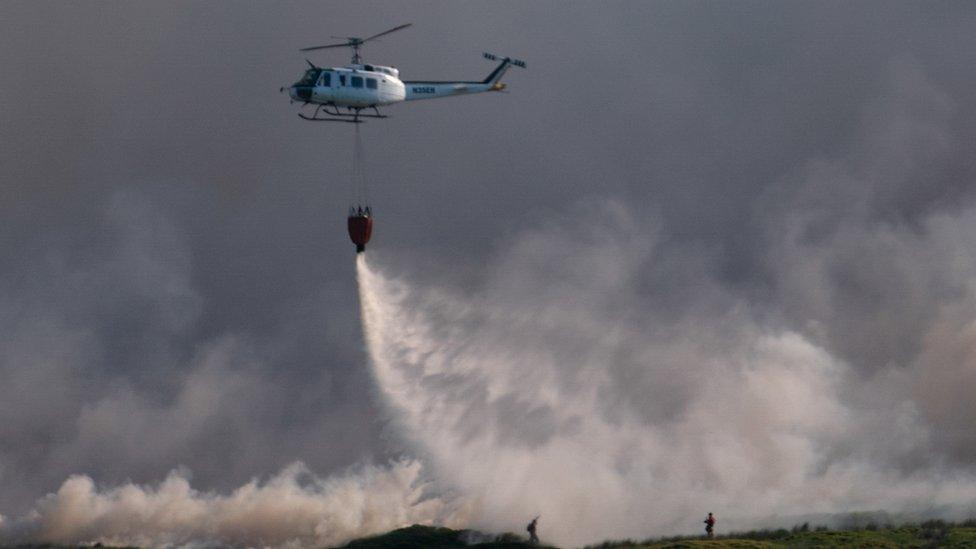
The fire stretches over 3 sq miles (8 sq km)
Lancashire Fire and Rescue Service said it was expecting to tackle the fire until Tuesday at the earliest.
A family had to leave their home after a major moorland blaze
It also appealed for people not to fly drones over the scene.
Allow X content?
This article contains content provided by X. We ask for your permission before anything is loaded, as they may be using cookies and other technologies. You may want to read X’s cookie policy, external and privacy policy, external before accepting. To view this content choose ‘accept and continue’.

How common are moorland fires in the UK?
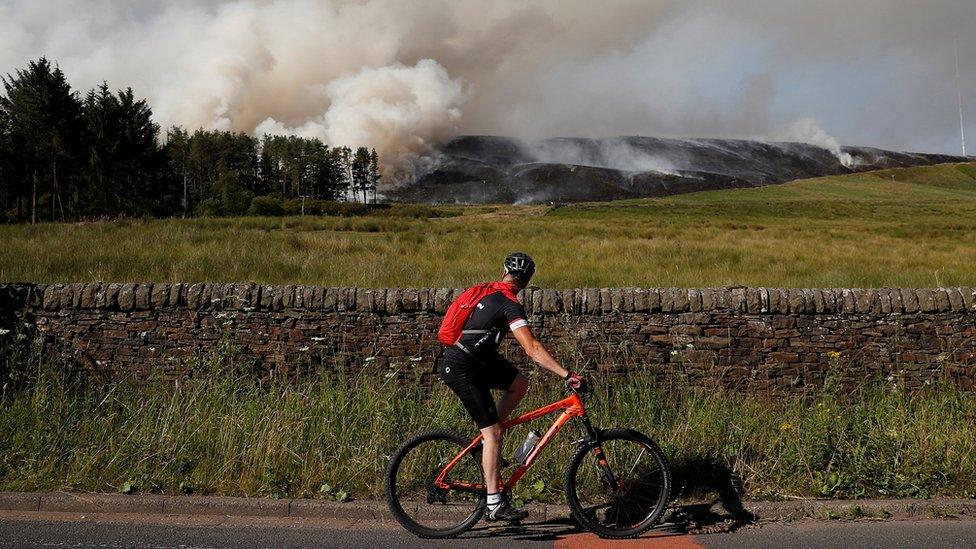
The current moorland fires are relatively unusual, says Alastair Lewis, professor at the National Centre for Atmospheric Science, but they could become more frequent because of climate change.
Guillermo Rein, professor of fire science at Imperial College London, said a population increase and the growth of development on the fringe of urban areas has also contributed.
He says the link between fires and climate change is even stronger in northern Europe. While small fires can be beneficial to moorlands, large and intense fires damage ecosystems, he added.
The Met Office says nearly all moorland fires in the UK are started by people - such as from campfires or discarded cigarettes and glass - whereas lightning strikes are frequently the cause in other parts of the world.
The UK's peaty moorlands are massive carbon reservoirs, which become tinder-boxes during prolonged dry spells, says Nick Ostle from Lancaster Environment Centre.
Source: Science Media Centre, external

Lancashire assistant chief fire officer Dave Russell said: "Moorland firefighting is very demanding - the firefighters are dealing with undulating terrain, different types of vegetation but also the logistics of deploying resources onto the moorland present us with a number of challenges.
"We're dealing with smouldering fire and flame thumps, which could be 6 to 8 feet.
"My concern primarily yesterday was that, on the top of Winter Hill, there are a number of radio telecommunication systems, which are essentially part of critical national infrastructure."
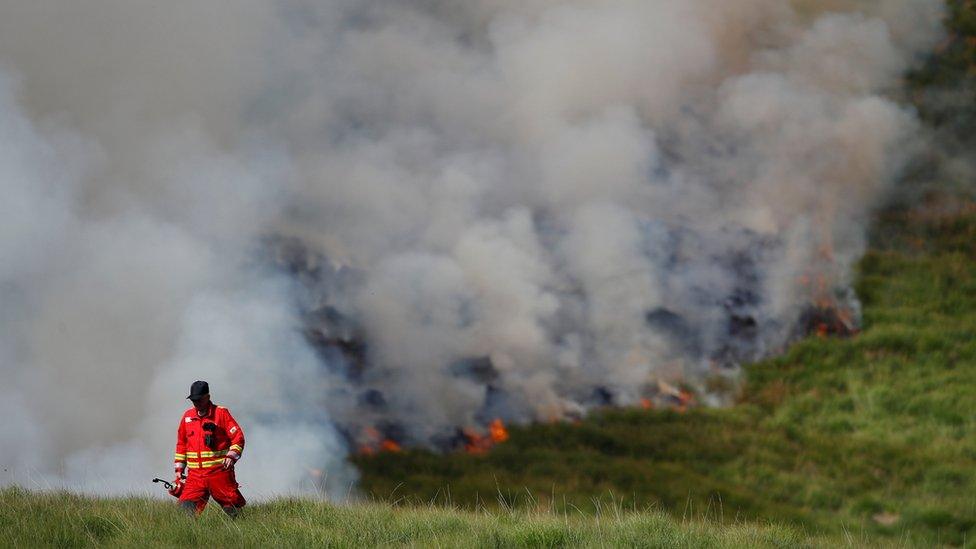
A firefighter walks away from smoke as it rises over Winter Hill
Trenches have been dug to prevent the fire spreading, including one around a house that was evacuated, while a helicopter has been dropping water to help douse the flames.
Greater Manchester assistant chief fire officer Dave Keelan said: "This is an exceptionally challenging time and I am proud of the hard work and brave commitment of our firefighters."
Met Office forecaster Helen Roberts said there was no significant rain forecast in the area this week.
She added that "winds are likely to pick up overnight", which could worsen the fire.

At the scene
Dave Guest, BBC News
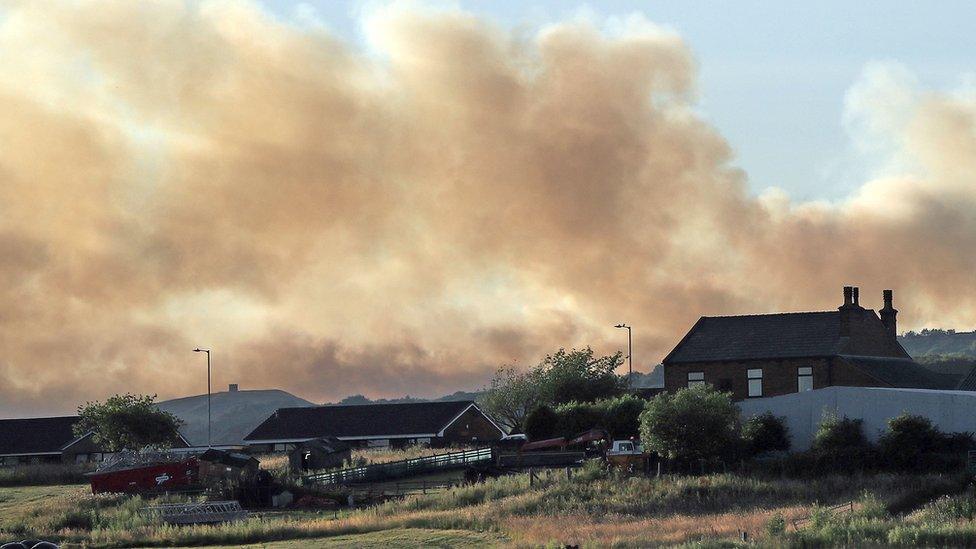
Residents have been told to keep windows shut
The terrain is difficult, the ground is tinder-dry and fire crews are being hampered by strong winds, which have continually whipped up the flames.
The problem with peat fires, as we discovered on Saddleworth Moor last week, is they can often burn underground for quite some time and then pop up in different areas.
The firefighters say a number of sightseers have been coming up here - ignoring road closures to try to get a closer look - and they're saying don't do that because it is very dangerous.

There are about 200 firefighters on the moors, split over seven areas of wildfire at Saddleworth and Winter Hill.
About 100 soldiers from the 4th Battalion, Royal Regiment of Scotland, were sent from their Yorkshire barracks on Thursday to aid firefighters in Saddleworth for an initial 48-hour deployment.
Their presence has been extended until Monday afternoon following a request by Greater Manchester mayor Andy Burnham.
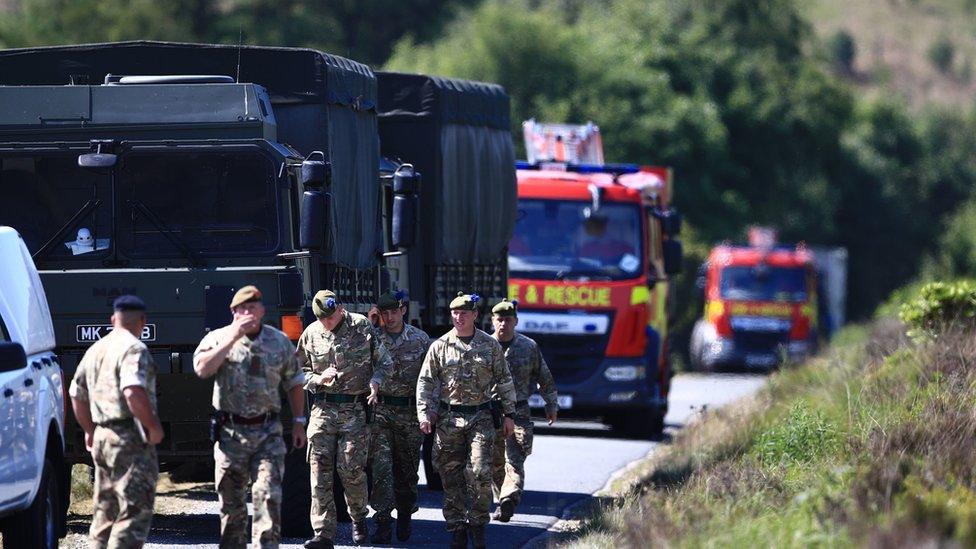
Soldiers have been drafted in to help tackle the Saddleworth fire
- Published30 June 2018
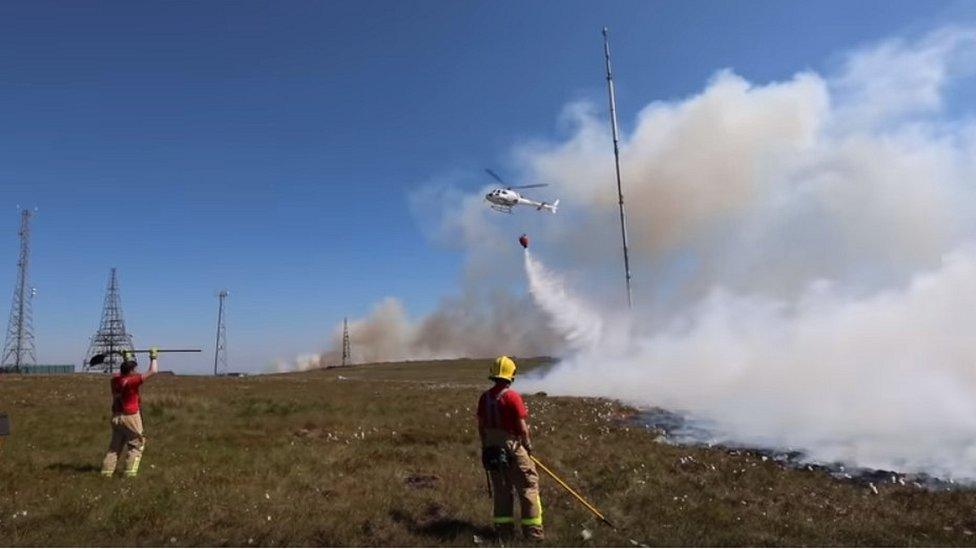
- Published29 June 2018

- Published28 June 2018

- Published28 June 2018
